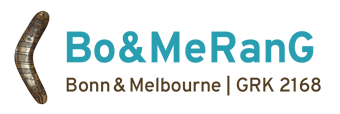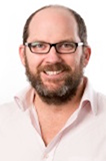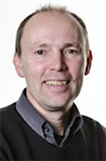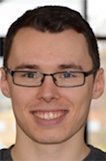Turner- Schultze collaborative projects

Melbourne subproject:
Enhancer commissioning and decommissioning regulates lineage-specific transcriptional activation during virus-specific CD8+ T cell differentiation

Dept of Microbiology
& Immunology
Monash University
Email Stephen
Infection triggers large-scale changes in the phenotype and function of T cells that are critical for immune clearance, yet the gene regulatory mechanisms that control these changes are largely unknown. Using ChIP-seq for multiple histone PTM combinations, ATAC-seq for mapping genome wide chromatin accessibility and HiC for mapping higher order chromatin structures, we mapped the dynamics of ~26,000 putative CD8+ T cell transcriptional enhancers (TEs) and their contacts that are differentially utilised within ex vivo isolated naïve, effector and memory virus-specific CD8+ T cell during differentiation. We have demonstrated virus-specific T cell differentiation is underpinned by a combination of de novo TE gain and loss, maturation of the chromatin state via activation of “poised” TEs already present within naïve T cells, and specific transcription factor targeting of TEs that exhibit a non-canonical (H3K4me3+) chromatin signature upon differentiation. Our data also demonstrate that the chromatin structures within naïve CD8+ T cells are pre-configured at both the level of histone PTMs and higher order chromatin contacts. This genomic pre-configuration enables targeted maturation of lineage-specific genomic elements upon T cell activation, thus implying that the outcome of CD8+ T cell differentiation is largely pre-determined. These data have implications for the molecular events, and their regulation, that occur during the generation of effective T cell responses and establishment of immunological memory. Future projects will focus how distinct chromatin remodeling proteins and transcription factors regulate both higher chromatin structures and chromatin interactions during virus-specific T cell differentiation.
Bonn subproject:
Cell-to-cell communication within the immune system studied in humans

Life & Medical
Sciences Institute
Email Joachim

PhD Student
Life & Medical
Sciences Institute
Email Patrick
A hallmark of the immune system is its sophisticated cell-to-cell communication between different cellular subtypes including both the innate and the adaptive immune system. Utilising elegant murine genetic models and more recently intravital imaging has paved the way towards a better understanding of cell-to-cell communication in the immune system. Yet both approaches cannot be applied to understand cell-to-cell communication in the human immune system. Even more problematic, for several decades now we have studied human immune cell subtypes only after very efficient cell type purification thereby erasing cell-to-cell communication between different cell subtypes from the equation. We here propose to study cell-to-cell communication in human whole blood as a model organ in response to influenza A virus using a special whole blood culture system followed by flow cytometric isolation of cell subsets prior to further analysis. To model cell-to-cell communication, samples will be taken at different time points and subjected to genome-wide analysis of transcriptional regulation by RNA-seq and epigenetic regulation by ATAC-seq. Mathematical modelling of cellular interactions will be applied thereafter. For selected experiments, single-cell RNA-seq of CD45+ cells will be performed. Novel cell-to-cell communication ‘channels’ will be further evaluated in vivo together with Steve Turner (Melbourne) either in animal models or in whole bloods from influenza infected patients obtained as part of the influenza program in Melbourne. Overall, we anticipate bringing back the signal flow between different cell types during the onset of an immune reaction to the equation of immunological analyses in the human system. Moreover, the students will have the chance to learn approaches from at least two other disciplines (genomics, bioinformatics) in addition to immunological techniques. We will also make use of very complementary expertise in Melbourne by Stephen Turner (animal models of influenza infection, influenza-infected patient cohorts).
